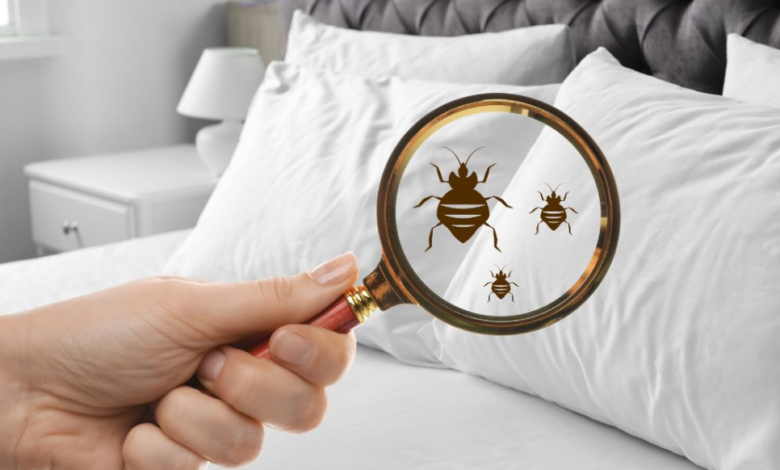10 Proven Ways to Prevent a Bed Bug Infestation

Bed bugs are small, blood-sucking pests that can turn your peaceful home into a nightmare. These tiny insects hide in mattresses, furniture, and even electrical outlets, making them difficult to detect and eliminate. Once they infest your home, getting rid of them can be costly and time-consuming.
The best way to deal with bed bugs is to prevent them from entering your home in the first place. By following these 10 proven strategies, you can significantly reduce the risk of a bed bug infestation and keep your living space safe and comfortable.
1. Inspect Secondhand Furniture Before Bringing It Home
One of the most common ways bed bugs enter homes is through used furniture. Before purchasing or accepting secondhand items like mattresses, couches, or dressers, inspect them thoroughly.
- Look for tiny dark spots (bed bug feces), shed skins, or live bugs in seams and crevices.
- Use a flashlight to check hidden areas.
- If possible, avoid picking up discarded furniture from the street, as it may already be infested.
2. Regularly Wash and Heat-Dry Bedding and Clothing
Bed bugs ( væggelus ) cannot survive extreme heat. Washing and drying your bedding, curtains, and clothing at high temperatures can kill any hidden bed bugs.
- Wash linens in hot water (at least 60°C or 140°F).
- Dry items on the highest heat setting for at least 30 minutes.
- Store clean laundry in sealed bags if you’re traveling or suspect an infestation.
3. Use Protective Mattress and Box Spring Encasements
Special bed bug-proof encasements create a barrier that prevents bed bugs from entering or escaping your mattress and box spring.
- Choose high-quality, zippered encasements labeled specifically for bed bug protection.
- Leave the encasement on for at least a year to ensure any trapped bugs die.
See also: Why Local Pest Control in Chelmsford Are a Smarter Choice Than Big Chains
4. Reduce Clutter in Your Home
Clutter provides hiding spots for bed bugs, making them harder to detect and eliminate.
- Keep your bedroom tidy and minimize unnecessary items under the bed.
- Store belongings in plastic bins instead of cardboard boxes (which bed bugs can easily infest).
- Regularly vacuum carpets, rugs, and upholstered furniture.
5. Be Cautious When Traveling
Hotels, hostels, and even luxury resorts can harbor bed bugs. Follow these steps to avoid bringing them home:
- Inspect your hotel room before unpacking—check the mattress seams, headboard, and furniture.
- Keep luggage on a hard surface (like a luggage rack) instead of the floor or bed.
- Wash and heat-dry all clothing immediately after returning home.
- Consider using a sealed travel bag for dirty laundry.
6. Seal Cracks and Crevices in Your Home
Bed bugs ( væggelus ) Can enter through tiny gaps in walls, baseboards, and electrical outlets.
- Use caulk to seal cracks around windows, doors, and baseboards.
- Install outlet covers to block potential hiding spots.
- Repair peeling wallpaper and loose floorboards.
7. Use Bed Bug Interceptors Under Furniture Legs
Bed bug interceptors are small traps placed under bed and furniture legs to catch crawling bugs.
- These devices prevent bed bugs from climbing onto your bed or couch.
- Check interceptors weekly for any trapped bugs.
8. Avoid Bringing Used Books and Electronics into Your Home Without Inspection
Bed bugs can hide in more than just furniture—they can also infest books, laptops, and other electronics.
- Inspect secondhand books for tiny bugs or dark spots.
- Wipe down electronics with a slightly damp cloth and inspect seams.
9. Be Wary of Shared Laundry Facilities
If you use a communal laundry room, bed bugs could hitch a ride on your clothes.
- Transport laundry in sealed plastic bags.
- Remove clothes from the dryer immediately and fold them at home.
10. Monitor for Early Signs of Infestation
Early detection is key to preventing a full-blown infestation.
- Look for small blood stains on sheets, dark fecal spots, or shed skins.
- Use bed bug monitors to detect activity before it spreads.
- If you suspect bed bugs, contact a professional pest control service immediately.
Final Thoughts
Preventing bed bugs requires vigilance, but by following these 10 proven strategies, you can protect your home from these persistent pests. Regular inspections, proper hygiene, and smart travel habits will go a long way in keeping your living space bed bug-free.
If you do encounter an infestation, act quickly—early intervention makes elimination easier. By staying proactive, you can enjoy a peaceful, bug-free home for years to come
